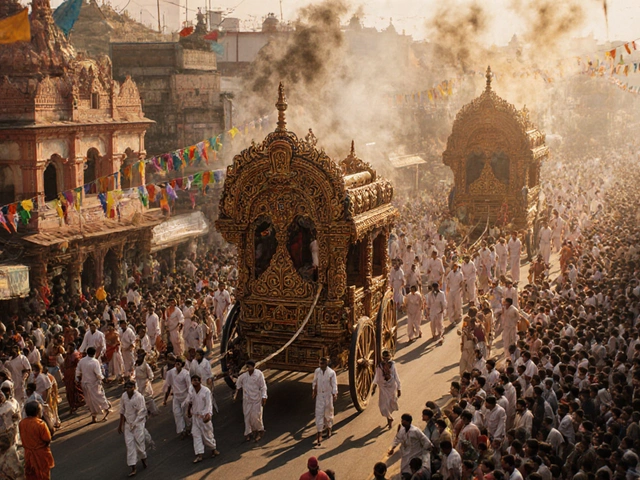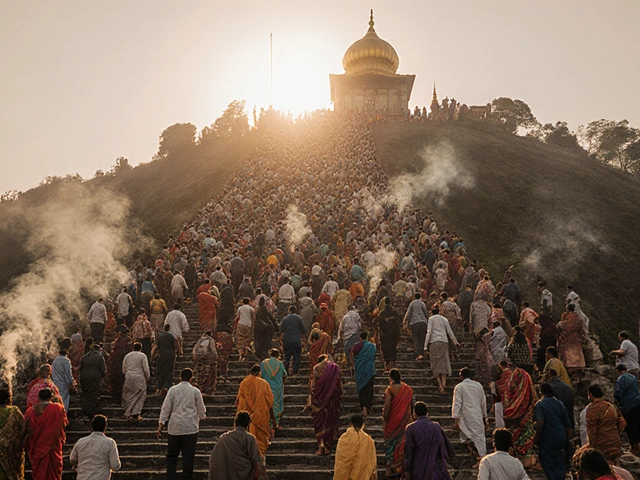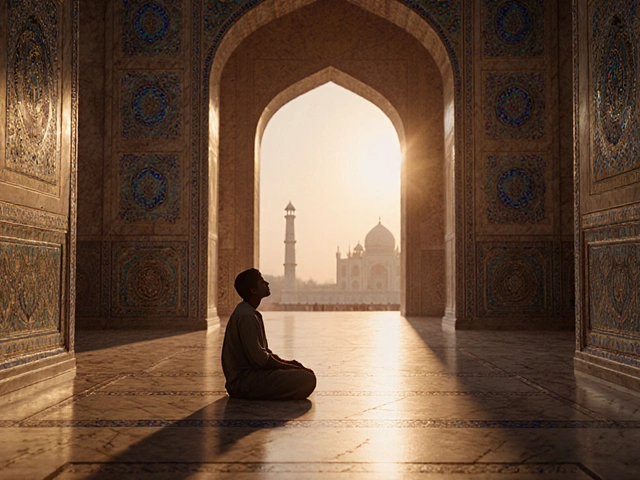Cultural Beauty Explorer
Discover how beauty is expressed in India's cultural heritage through key historical sites and traditions. Each element reveals a different aspect of what makes Indian beauty timeless and profound.
Select a cultural element from the dropdown above to see how beauty is expressed in India's heritage.
People ask, "Who is the most beautiful woman in India?" like it’s a contest with a winner. But if you’ve ever walked through the marble halls of the Taj Mahal at sunrise, or stood in the silent courtyards of Orchha’s palaces, you know beauty in India isn’t about one face. It’s woven into the stone, the fabric, the rhythm of daily life that’s lasted centuries.
Beauty isn’t a person-it’s a place
The Taj Mahal was built by a grieving emperor for his wife. Mumtaz Mahal’s name means "chosen one of the palace." She died giving birth to their 14th child. Shah Jahan didn’t just build a tomb-he built a monument to love, grief, and the kind of devotion that turns sorrow into art. Today, millions visit. Some snap selfies. Others sit quietly, staring at the inlay work made from lapis lazuli, jade, and turquoise. That’s when you realize: the most beautiful thing here isn’t a person. It’s the memory preserved in marble.
Same with the temples of Khajuraho. The sculptures there don’t show idealized faces. They show real bodies-curves, folds, movement. Women dancing, women bathing, women holding children. These weren’t fantasies. They were celebrations of life, fertility, and the divine feminine. The beauty wasn’t in perfection. It was in presence.
What modern media misses
Every year, beauty pageants crown winners. Miss India. Miss Universe. Their faces flash across screens. But if you ask a grandmother in Varanasi what beauty means, she’ll point to the woman who wakes before dawn to light the ghee lamp at the temple. Or the farmer’s wife in Rajasthan who carries 40 liters of water on her head, walks five kilometers, and still sings while grinding grain.
Indian beauty has always been tied to resilience. To dignity. To quiet strength. The women who rebuilt homes after floods in Bihar. The weavers in Kanchipuram who’ve passed down silk-weaving techniques for 500 years. The temple dancers in Odisha who still perform Bharatanatyam the same way their ancestors did-no filters, no edits, just devotion.
When you look at the Ajanta Caves, the murals show women with elaborate jewelry, flowing saris, and expressions of calm focus. Not smiling for a camera. Not posing. Just being. That’s the kind of beauty that lasts.
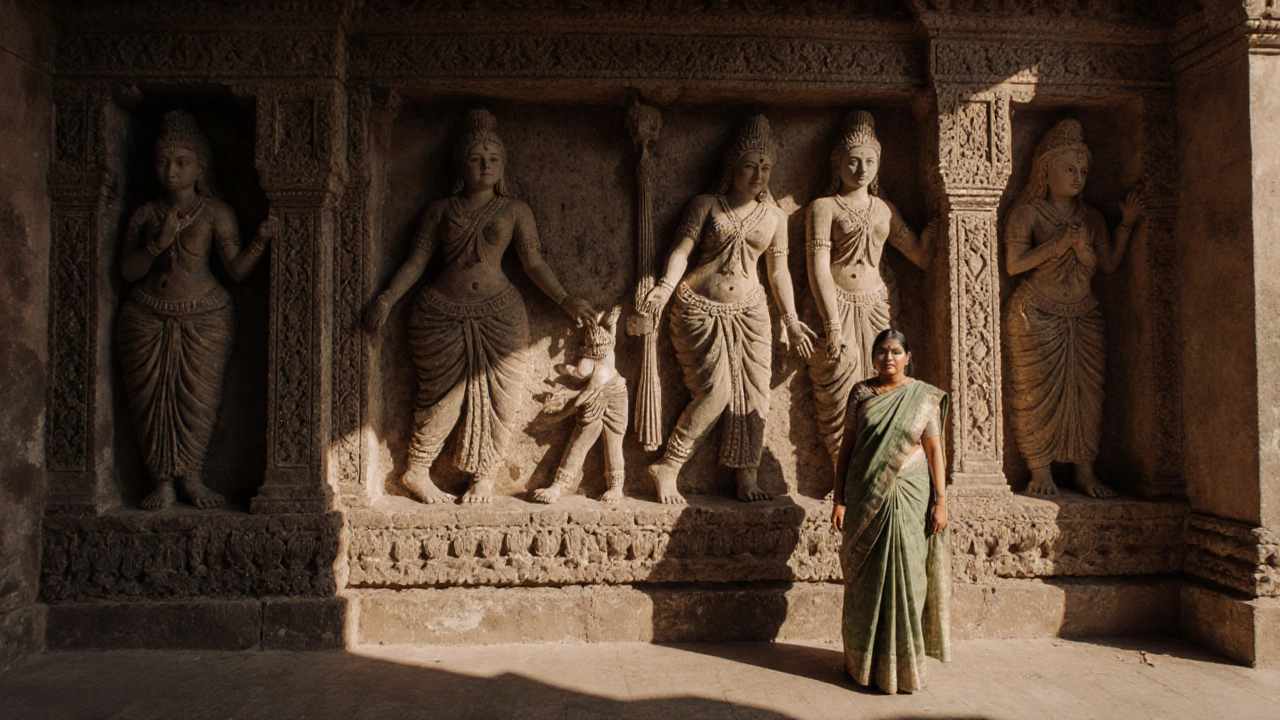
The myth of the "one"
There’s no single woman who holds the title of "most beautiful" in India. Not because there aren’t stunning people. But because India doesn’t measure beauty the way Western media does. It doesn’t reduce it to symmetry, skin tone, or body shape.
Look at the Mughal miniatures from the 16th century. Painters didn’t copy faces from life. They painted ideals-eyes shaped like lotus petals, brows like arches, lips like coral. These weren’t portraits. They were spiritual symbols. Beauty was linked to grace, wisdom, and inner light.
Even today, in rural villages, a woman is called "sundari"-beautiful-not because of her looks, but because she brings peace to her home. Because she remembers every prayer. Because she knows which herbs heal fever, which songs calm a crying child.
Where to see real Indian beauty
If you want to understand what beauty means in India, don’t search for a celebrity. Go to the places where time hasn’t rushed ahead.
- Visit the stepwells of Gujarat. See the women drawing water from centuries-old stone wells, their movements rhythmic, unhurried.
- Walk through the narrow lanes of Jaisalmer’s havelis. Watch the women in mirror-work lehengas laughing as they hang laundry under the desert sun.
- Stand at the banks of the Ganges in Varanasi. Watch the elderly women dip their hands in the water, whispering prayers, their faces lined with decades of sun and service.
These aren’t models. They’re keepers of culture. Their beauty isn’t for sale. It’s not for likes. It’s lived.
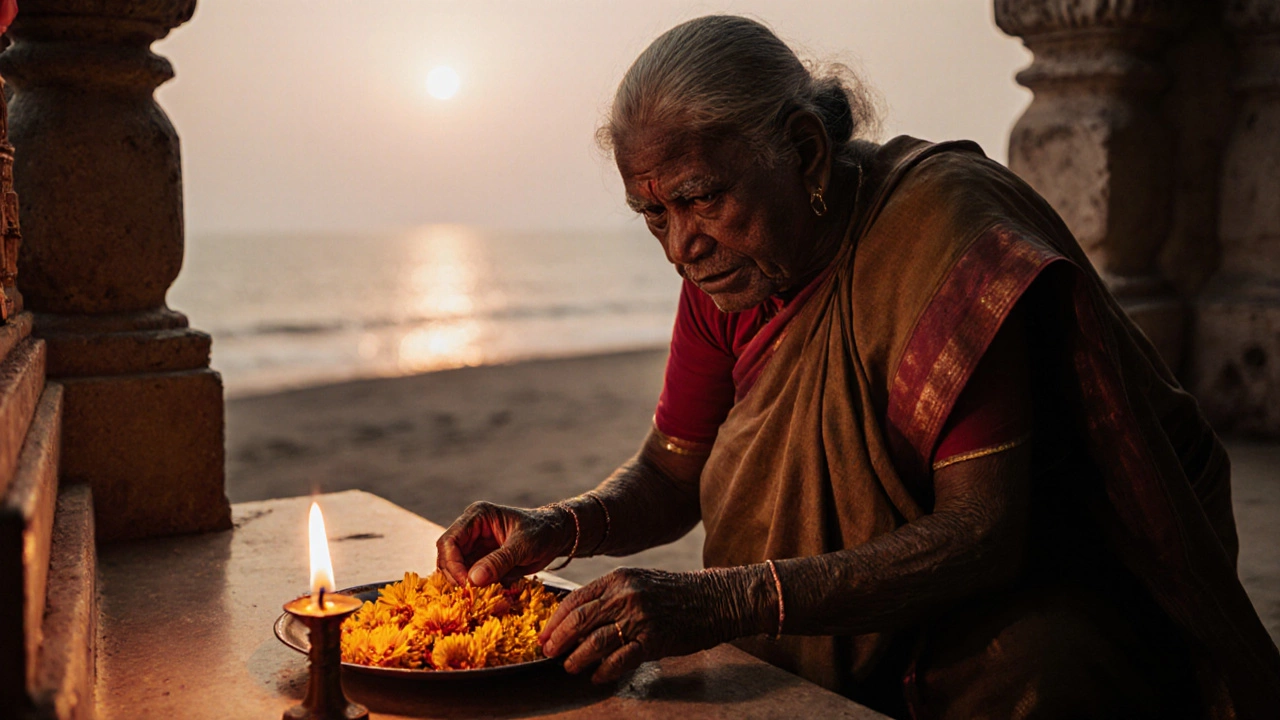
Why this question keeps coming up
The question "Who is the most beautiful woman in India?" comes from a place of curiosity. But it also comes from a global culture that loves to rank, label, and simplify. India resists that. It’s too rich, too layered, too ancient to be reduced to one face.
Think about the women who built India’s heritage. The queens who commissioned temples. The artisans who carved the pillars of Fatehpur Sikri. The mothers who taught their daughters to weave Banarasi silk. They didn’t need a crown. Their legacy is in the stones, the songs, the silence of a temple at dusk.
Beauty in India isn’t found in a spotlight. It’s found in the way a woman folds her sari just so before stepping into a temple. In the way she holds her granddaughter’s hand while walking through a 12th-century courtyard. In the way she remembers the name of every flower that grows near the well.
What you’ll never see on Instagram
There’s a woman in Puri who wakes at 4 a.m. every day to make offerings to Lord Jagannath. She’s 82. Her hands shake. Her back is bent. But her eyes? Clear as the ocean she’s watched for 70 years. She doesn’t post online. No one gave her a title. But if you ask the priests at the temple, they’ll say: "She is the most beautiful. Because she never stopped showing up."
That’s the kind of beauty that outlives empires. That survives wars, colonization, and Instagram trends. It doesn’t need a hashtag. It doesn’t need a vote. It just is.
Is there an official "most beautiful woman in India"?
No. India doesn’t have an official title for "most beautiful woman." Beauty pageants crown winners, but those are entertainment events, not cultural or historical rankings. The idea of one person holding that title contradicts how Indian heritage views beauty-as something lived, shared, and rooted in community, not competition.
Why do people focus on physical beauty in India?
Global media and colonial influence pushed narrow beauty standards into India over the last century. Fair skin, slim figures, and Western features were marketed as ideal. But these ideas clash with centuries of Indian art, poetry, and philosophy, which valued inner grace, wisdom, and resilience over physical perfection. Many Indians today are rejecting these imported standards and returning to older, deeper definitions of beauty.
Are Indian women still respected for their traditional roles?
Yes, but it’s changing. In cities, women are breaking barriers in tech, politics, and sports. In villages, they still manage households, preserve crafts, and lead rituals. Respect isn’t tied to one path. It’s earned through contribution. A woman who weaves a silk sari for 12 hours a day is as respected as a woman who leads a billion-dollar startup. Both are upholding India’s legacy in different ways.
How do heritage sites reflect Indian beauty?
India’s heritage sites were built by and for women-even if their names aren’t carved in stone. The intricate carvings on temple walls often show women as dancers, mothers, and sages. The architecture of stepwells was designed so women could access water safely and comfortably. The patterns in textiles, the songs passed down, the rituals performed-these are all expressions of feminine wisdom that shaped India’s culture. Beauty here is in function, not just form.
Can beauty be measured in heritage?
Not by numbers, but by endurance. The Taj Mahal isn’t beautiful because it’s perfect. It’s beautiful because it survived invasions, pollution, and time-and still moves people to tears. Similarly, the beauty of Indian women isn’t measured by awards or followers. It’s measured in how many generations they’ve carried traditions forward, how many children they’ve raised, how many songs they’ve kept alive. That’s the real legacy.
If you want to see the most beautiful woman in India, don’t look for a name. Look for a story. It’s in the hands that polish the marble at the Taj. In the voice that sings the bhajan at dawn. In the eyes that have watched the same river for 80 years. She’s not famous. But she’s everywhere.



